My ten PhD students
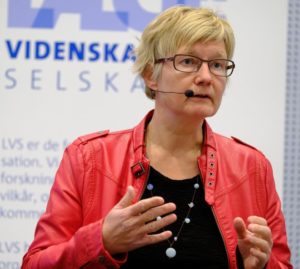 The first was a biology M.Sc., Maj-Britt Juhl Poulsen, who contacted me in 1996 with a proposal to write about competition and cooperation in science. I suggested her to frame it from the perspective of Lorraine Daston’s recently published and later seminal article “The moral economy of science” (Osiris, vol. 10, 1995: 2-24), and drawing on her familiarity with biomedical institutions, Maj-Britt interviewed researchers about their competitive experiences. The grant ran out in 1999, but she got a chance to be funded elsewhere, and moved the project to the University of Copenhagen, where she defended her dissertation, Competition and cooperation among colleagues in biomedical research, in 2000, with the late David Hull as primary opponent (see summary here. Maj-Britt now works as senior executive advisor on health data infrastructure in Danish Regions.
The first was a biology M.Sc., Maj-Britt Juhl Poulsen, who contacted me in 1996 with a proposal to write about competition and cooperation in science. I suggested her to frame it from the perspective of Lorraine Daston’s recently published and later seminal article “The moral economy of science” (Osiris, vol. 10, 1995: 2-24), and drawing on her familiarity with biomedical institutions, Maj-Britt interviewed researchers about their competitive experiences. The grant ran out in 1999, but she got a chance to be funded elsewhere, and moved the project to the University of Copenhagen, where she defended her dissertation, Competition and cooperation among colleagues in biomedical research, in 2000, with the late David Hull as primary opponent (see summary here. Maj-Britt now works as senior executive advisor on health data infrastructure in Danish Regions.
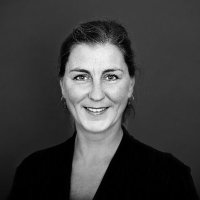 When I took up the chair in history of medicine in Copenhagen in 1999, I was able to recruit six PhD-students, who met around the large meeting table in my office every second week for discussions of chapter drafts. With the help of a research grant for studies of the history of scientific biography, I recruited a literary critic and MA student in nordic literature, Signe Lindskov, to write about the history of Danish scientific and learned biographies. Her dissertation, Den glemte genre: Læsninger af danske forsker- og lærdomsbiografier fra 1750 til i dag, based on a huge library material, was defended in 2004. Signe later went into publishing and is now chief editor at Dansk Psykologisk Forlag. See her LinkedIn page here.
When I took up the chair in history of medicine in Copenhagen in 1999, I was able to recruit six PhD-students, who met around the large meeting table in my office every second week for discussions of chapter drafts. With the help of a research grant for studies of the history of scientific biography, I recruited a literary critic and MA student in nordic literature, Signe Lindskov, to write about the history of Danish scientific and learned biographies. Her dissertation, Den glemte genre: Læsninger af danske forsker- og lærdomsbiografier fra 1750 til i dag, based on a huge library material, was defended in 2004. Signe later went into publishing and is now chief editor at Dansk Psykologisk Forlag. See her LinkedIn page here.
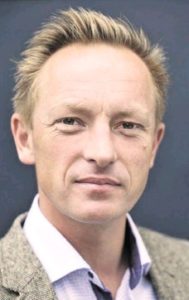 Søren Bak-Jensen, who was trained as a Masters student in history, decided to write about the history of the professionalization of chiropractors in Denmark in the first half of the 20th century. He completed his dissertation, titled Manipulative exclusivity: The legitimation strategies of early Danish chiropractors, 1920-43, in record time and defended it in 2004 with renown UK historian of medicine Roger Cooter as the primary opponent. Søren continued to work with me as a postdoc and collection/exhibition curator at Medical Museion for another five years, until 2009, when he moved to a position as head of collections at the Museum of Copenhagen. He is now director of the Worker’s Museum in Denmark. See his LinkedIn page here.
Søren Bak-Jensen, who was trained as a Masters student in history, decided to write about the history of the professionalization of chiropractors in Denmark in the first half of the 20th century. He completed his dissertation, titled Manipulative exclusivity: The legitimation strategies of early Danish chiropractors, 1920-43, in record time and defended it in 2004 with renown UK historian of medicine Roger Cooter as the primary opponent. Søren continued to work with me as a postdoc and collection/exhibition curator at Medical Museion for another five years, until 2009, when he moved to a position as head of collections at the Museum of Copenhagen. He is now director of the Worker’s Museum in Denmark. See his LinkedIn page here.
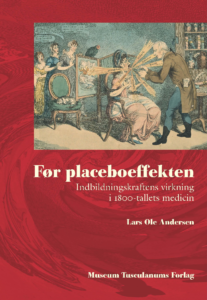
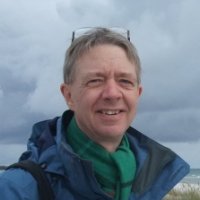 Another member of the seminar was Lars Ole Andersen, who worked as an exhibition docent at Medical Museion when I arrived there in 1999. A few years later, I suggested he should translate his interest in the history of the placebo effect into a PhD project, and he soon discovered a large and very interesting material in the 19th century medical literature about the force of imagination. Før placeboeffekten: Indbildningskraftens virkning i 1800-tallets medicin was defended in February 2005, and was later edited into a book on Museum Tusculanum Forlag in 2011 (see a review in English of it here). Lars left the museum for a career as a health coordinator in a municipality outside Copenhagen (see his LinkedIn page here).
Another member of the seminar was Lars Ole Andersen, who worked as an exhibition docent at Medical Museion when I arrived there in 1999. A few years later, I suggested he should translate his interest in the history of the placebo effect into a PhD project, and he soon discovered a large and very interesting material in the 19th century medical literature about the force of imagination. Før placeboeffekten: Indbildningskraftens virkning i 1800-tallets medicin was defended in February 2005, and was later edited into a book on Museum Tusculanum Forlag in 2011 (see a review in English of it here). Lars left the museum for a career as a health coordinator in a municipality outside Copenhagen (see his LinkedIn page here).
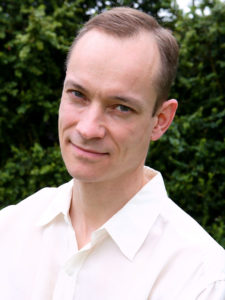
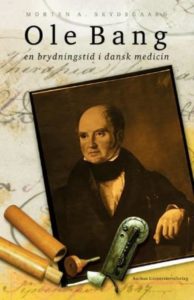 Morten Arnika Skydsgaard was one of the few young medical doctors at the University of Copenhagen, who was more interested in the history of medicine than in practicing the craft; he first wanted to study the breakthrough of modern medicine in Denmark, but soon became more interested in the last stages of the preceding hippocratic tradition. His dissertation, Ole Bang og den sidste hippokratiske medicin was defended in 2004 and two years later rewritten as a book: Ole Bang og en brydningstid i dansk medicin (Århus Universitetsforlag, 2006; see a review in English of it here). Already before finishing his thesis, Morten was appointed curator at the Steno Museum in Aarhus, where he has continued his medical history research and curated a number of well-received exhibitions. See his LinkedIn page here).
Morten Arnika Skydsgaard was one of the few young medical doctors at the University of Copenhagen, who was more interested in the history of medicine than in practicing the craft; he first wanted to study the breakthrough of modern medicine in Denmark, but soon became more interested in the last stages of the preceding hippocratic tradition. His dissertation, Ole Bang og den sidste hippokratiske medicin was defended in 2004 and two years later rewritten as a book: Ole Bang og en brydningstid i dansk medicin (Århus Universitetsforlag, 2006; see a review in English of it here). Already before finishing his thesis, Morten was appointed curator at the Steno Museum in Aarhus, where he has continued his medical history research and curated a number of well-received exhibitions. See his LinkedIn page here).
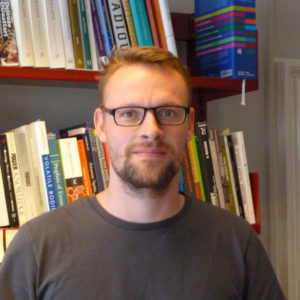 My longest-time junior colleague is Adam Bencard, whom I met as a history and philosophy student in Roskilde back in 1997, and who joined me at Medical Museion as a PhD student. I suggested him to write about the history of medical museums (he had studied Ole Worm’s early modern museum for his Masters thesis), but after a year he changed his mind; following his philosophical interests, he delved into the literature on the history and social studies of the body, and ended up with a dissertation titled History in the flesh: investigating the historicized body, which he defended in January 2008 (see a resumé here), with Roger Cooter as primary opponent. Since then Adam has worked as research assistant, postdoc and curator at Medical Museion, doing research on aesthetic philosophy and material studies, and curating several exhibitions, including Mind the Gut.
My longest-time junior colleague is Adam Bencard, whom I met as a history and philosophy student in Roskilde back in 1997, and who joined me at Medical Museion as a PhD student. I suggested him to write about the history of medical museums (he had studied Ole Worm’s early modern museum for his Masters thesis), but after a year he changed his mind; following his philosophical interests, he delved into the literature on the history and social studies of the body, and ended up with a dissertation titled History in the flesh: investigating the historicized body, which he defended in January 2008 (see a resumé here), with Roger Cooter as primary opponent. Since then Adam has worked as research assistant, postdoc and curator at Medical Museion, doing research on aesthetic philosophy and material studies, and curating several exhibitions, including Mind the Gut.
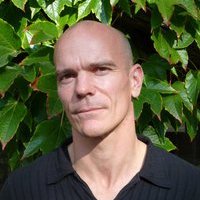
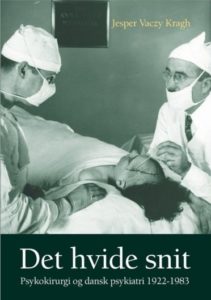 The last-coming member of the graduate seminar, Jesper Vaczy Kragh, was also an M.A. in history from the University of Copenhagen. He came with a strong interest in the history of psychiatry and soon discovered a unique archival material of medical records from 20th century Danish mental institutions, which allowed him to study the introduction and practice of lobotomy in detail. His dissertation Det hvide snit: Psykokirurgi og dansk psykiatri 1922-1983, was defended in 2007, and later published as a book on Syddansk Universitetsforlag (2010, 475 pp), which was very positively reviewed in Danish media (see for example here). Jesper has continued his productive research career in the history of Danish mental institutions.
The last-coming member of the graduate seminar, Jesper Vaczy Kragh, was also an M.A. in history from the University of Copenhagen. He came with a strong interest in the history of psychiatry and soon discovered a unique archival material of medical records from 20th century Danish mental institutions, which allowed him to study the introduction and practice of lobotomy in detail. His dissertation Det hvide snit: Psykokirurgi og dansk psykiatri 1922-1983, was defended in 2007, and later published as a book on Syddansk Universitetsforlag (2010, 475 pp), which was very positively reviewed in Danish media (see for example here). Jesper has continued his productive research career in the history of Danish mental institutions.
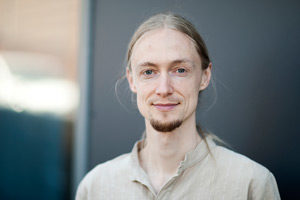 Thanks to museum’s involvement in a couple of large research centers at the University of Copenhagen I was able to finance three more PhD students. Morten Hillgaard Bülow, who had a background in philosophy and Danish literature from Roskilde University and an interest in third-wave feminist theory, applied for a stipend financed by a grant from the Center for Healthy Aging. Reading his way through the huge literature on healthy ageing from the last 30 years, he made a critical analysis of the concept of ‘healthy ageing’ and formulated alternative conceptual approaches from a ‘queer’ perspective. Morten’s dissertation, Unsettling successful ageing: A history and queering of the concept of successful ageing in ageing research (2013), was a compilation of four separate articles; one of them, in Journal of Ageing Studies, has already been cited 35 times. He’s currently working as editor of the Danish journal Gerontologi and is editorial secretary for the journal Women, Gender and Research.
Thanks to museum’s involvement in a couple of large research centers at the University of Copenhagen I was able to finance three more PhD students. Morten Hillgaard Bülow, who had a background in philosophy and Danish literature from Roskilde University and an interest in third-wave feminist theory, applied for a stipend financed by a grant from the Center for Healthy Aging. Reading his way through the huge literature on healthy ageing from the last 30 years, he made a critical analysis of the concept of ‘healthy ageing’ and formulated alternative conceptual approaches from a ‘queer’ perspective. Morten’s dissertation, Unsettling successful ageing: A history and queering of the concept of successful ageing in ageing research (2013), was a compilation of four separate articles; one of them, in Journal of Ageing Studies, has already been cited 35 times. He’s currently working as editor of the Danish journal Gerontologi and is editorial secretary for the journal Women, Gender and Research.
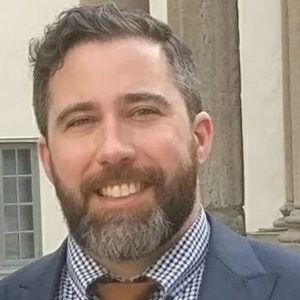 Adrian Bertoli, too, was financed through my engagement with the Center for Healthy Aging. Having a Masters in international community health from Oslo, he came in 2010 to work on a qualitative project on science communication and identity formation in type 2 diabetes patients. Like some of my other PhD students, however, Adrian changed his focus in the course of the first year: after having been introduced to digital methods in a course, he set about to show that such methods might be a useful addition to medical sociology’s tool box, and demonstrated through concrete analyses that digital objects (e.g. hyperlinks) and digital devices (e.g., search engines) can give us important knowledge about chronic illnesses. Adrian defended his dissertation in June 2016, and is currently associated with the Copenhagen Institute of NeuroCreativity. See his LinkedIn page here.
Adrian Bertoli, too, was financed through my engagement with the Center for Healthy Aging. Having a Masters in international community health from Oslo, he came in 2010 to work on a qualitative project on science communication and identity formation in type 2 diabetes patients. Like some of my other PhD students, however, Adrian changed his focus in the course of the first year: after having been introduced to digital methods in a course, he set about to show that such methods might be a useful addition to medical sociology’s tool box, and demonstrated through concrete analyses that digital objects (e.g. hyperlinks) and digital devices (e.g., search engines) can give us important knowledge about chronic illnesses. Adrian defended his dissertation in June 2016, and is currently associated with the Copenhagen Institute of NeuroCreativity. See his LinkedIn page here.
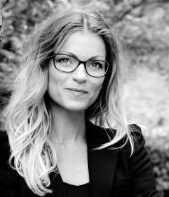 My last PhD student, Anette Stenslund, defended her dissertation Atmospheric smell – hospital based and museum staged (summary of the thesis here) in December 2015, a year before my retirement. Anette was trained as a sociologist and had written her M.A.-thesis on ‘seduction’. When we met in 2011, I had funding for science communication studies from the Center for Basic Metabolic Research, while she was interested in applying her training in phenomenology on the museum experience; thus we rapidly agreed on a research project to explore the possibilities of ‘displaying metabolic smell’. In practice, the dissertation came to focus on a theoretically informed empirical study of how patients and staff experience smell and atmosphere in hospital settings; the study of smell in museum settings was primarily made through a smell exhibition, titled MetaScent. Anette has continued her research on atmosphere and hospital aesthetics at the Department of Sociology here in Copenhagen.
My last PhD student, Anette Stenslund, defended her dissertation Atmospheric smell – hospital based and museum staged (summary of the thesis here) in December 2015, a year before my retirement. Anette was trained as a sociologist and had written her M.A.-thesis on ‘seduction’. When we met in 2011, I had funding for science communication studies from the Center for Basic Metabolic Research, while she was interested in applying her training in phenomenology on the museum experience; thus we rapidly agreed on a research project to explore the possibilities of ‘displaying metabolic smell’. In practice, the dissertation came to focus on a theoretically informed empirical study of how patients and staff experience smell and atmosphere in hospital settings; the study of smell in museum settings was primarily made through a smell exhibition, titled MetaScent. Anette has continued her research on atmosphere and hospital aesthetics at the Department of Sociology here in Copenhagen.

 The first was a biology M.Sc., Maj-Britt Juhl Poulsen, who contacted me in 1996 with a proposal to write about competition and cooperation in science. I suggested her to frame it from the perspective of Lorraine Daston’s recently published and later seminal article “The moral economy of science” (Osiris, vol. 10, 1995: 2-24), and drawing on her familiarity with biomedical institutions, Maj-Britt interviewed researchers about their competitive experiences. The grant ran out in 1999, but she got a chance to be funded elsewhere, and moved the project to the University of Copenhagen, where she defended her dissertation, Competition and cooperation among colleagues in biomedical research, in 2000, with the late
The first was a biology M.Sc., Maj-Britt Juhl Poulsen, who contacted me in 1996 with a proposal to write about competition and cooperation in science. I suggested her to frame it from the perspective of Lorraine Daston’s recently published and later seminal article “The moral economy of science” (Osiris, vol. 10, 1995: 2-24), and drawing on her familiarity with biomedical institutions, Maj-Britt interviewed researchers about their competitive experiences. The grant ran out in 1999, but she got a chance to be funded elsewhere, and moved the project to the University of Copenhagen, where she defended her dissertation, Competition and cooperation among colleagues in biomedical research, in 2000, with the late  When I took up the chair in history of medicine in Copenhagen in 1999, I was able to recruit six PhD-students, who met around the large meeting table in my office every second week for discussions of chapter drafts. With the help of a research grant for studies of the history of scientific biography, I recruited a literary critic and MA student in nordic literature, Signe Lindskov, to write about the history of Danish scientific and learned biographies. Her dissertation, Den glemte genre: Læsninger af danske forsker- og lærdomsbiografier fra 1750 til i dag, based on a huge library material, was defended in 2004. Signe later went into publishing and is now chief editor at Dansk Psykologisk Forlag. See
When I took up the chair in history of medicine in Copenhagen in 1999, I was able to recruit six PhD-students, who met around the large meeting table in my office every second week for discussions of chapter drafts. With the help of a research grant for studies of the history of scientific biography, I recruited a literary critic and MA student in nordic literature, Signe Lindskov, to write about the history of Danish scientific and learned biographies. Her dissertation, Den glemte genre: Læsninger af danske forsker- og lærdomsbiografier fra 1750 til i dag, based on a huge library material, was defended in 2004. Signe later went into publishing and is now chief editor at Dansk Psykologisk Forlag. See  Søren Bak-Jensen, who was trained as a Masters student in history, decided to write about the history of the professionalization of chiropractors in Denmark in the first half of the 20th century. He completed his dissertation, titled Manipulative exclusivity: The legitimation strategies of early Danish chiropractors, 1920-43, in record time and defended it in 2004 with renown UK historian of medicine
Søren Bak-Jensen, who was trained as a Masters student in history, decided to write about the history of the professionalization of chiropractors in Denmark in the first half of the 20th century. He completed his dissertation, titled Manipulative exclusivity: The legitimation strategies of early Danish chiropractors, 1920-43, in record time and defended it in 2004 with renown UK historian of medicine 
 Another member of the seminar was Lars Ole Andersen, who worked as an exhibition docent at Medical Museion when I arrived there in 1999. A few years later, I suggested he should translate his interest in the history of the placebo effect into a PhD project, and he soon discovered a large and very interesting material in the 19th century medical literature about the force of imagination. Før placeboeffekten: Indbildningskraftens virkning i 1800-tallets medicin was defended in February 2005, and was later edited into a book on Museum Tusculanum Forlag in 2011 (see a
Another member of the seminar was Lars Ole Andersen, who worked as an exhibition docent at Medical Museion when I arrived there in 1999. A few years later, I suggested he should translate his interest in the history of the placebo effect into a PhD project, and he soon discovered a large and very interesting material in the 19th century medical literature about the force of imagination. Før placeboeffekten: Indbildningskraftens virkning i 1800-tallets medicin was defended in February 2005, and was later edited into a book on Museum Tusculanum Forlag in 2011 (see a 
 Morten Arnika Skydsgaard was one of the few young medical doctors at the University of Copenhagen, who was more interested in the history of medicine than in practicing the craft; he first wanted to study the breakthrough of modern medicine in Denmark, but soon became more interested in the last stages of the preceding hippocratic tradition. His dissertation, Ole Bang og den sidste hippokratiske medicin was defended in 2004 and two years later rewritten as a book: Ole Bang og en brydningstid i dansk medicin (Århus Universitetsforlag, 2006; see a
Morten Arnika Skydsgaard was one of the few young medical doctors at the University of Copenhagen, who was more interested in the history of medicine than in practicing the craft; he first wanted to study the breakthrough of modern medicine in Denmark, but soon became more interested in the last stages of the preceding hippocratic tradition. His dissertation, Ole Bang og den sidste hippokratiske medicin was defended in 2004 and two years later rewritten as a book: Ole Bang og en brydningstid i dansk medicin (Århus Universitetsforlag, 2006; see a  My longest-time junior colleague is Adam Bencard, whom I met as a history and philosophy student in Roskilde back in 1997, and who joined me at Medical Museion as a PhD student. I suggested him to write about the history of medical museums (he had studied Ole Worm’s early modern museum for his Masters thesis), but after a year he changed his mind; following his philosophical interests, he delved into the literature on the history and social studies of the body, and ended up with a dissertation titled
My longest-time junior colleague is Adam Bencard, whom I met as a history and philosophy student in Roskilde back in 1997, and who joined me at Medical Museion as a PhD student. I suggested him to write about the history of medical museums (he had studied Ole Worm’s early modern museum for his Masters thesis), but after a year he changed his mind; following his philosophical interests, he delved into the literature on the history and social studies of the body, and ended up with a dissertation titled 
 The last-coming member of the graduate seminar, Jesper Vaczy Kragh, was also an M.A. in history from the University of Copenhagen. He came with a strong interest in the history of psychiatry and soon discovered a unique archival material of medical records from 20th century Danish mental institutions, which allowed him to study the introduction and practice of lobotomy in detail. His dissertation Det hvide snit: Psykokirurgi og dansk psykiatri 1922-1983, was defended in 2007, and later published as a book on Syddansk Universitetsforlag (2010, 475 pp), which was very positively reviewed in Danish media (see for example
The last-coming member of the graduate seminar, Jesper Vaczy Kragh, was also an M.A. in history from the University of Copenhagen. He came with a strong interest in the history of psychiatry and soon discovered a unique archival material of medical records from 20th century Danish mental institutions, which allowed him to study the introduction and practice of lobotomy in detail. His dissertation Det hvide snit: Psykokirurgi og dansk psykiatri 1922-1983, was defended in 2007, and later published as a book on Syddansk Universitetsforlag (2010, 475 pp), which was very positively reviewed in Danish media (see for example  Adrian Bertoli, too, was financed through my engagement with the Center for Healthy Aging. Having a Masters in international community health from Oslo, he came in 2010 to work on a qualitative project on science communication and identity formation in type 2 diabetes patients. Like some of my other PhD students, however, Adrian changed his focus in the course of the first year: after having been introduced to digital methods in a course, he set about to show that such methods might be a useful addition to medical sociology’s tool box, and demonstrated through concrete analyses that digital objects (e.g. hyperlinks) and digital devices (e.g., search engines) can give us important knowledge about chronic illnesses. Adrian defended his dissertation in June 2016, and is currently associated with the Copenhagen Institute of NeuroCreativity. See his
Adrian Bertoli, too, was financed through my engagement with the Center for Healthy Aging. Having a Masters in international community health from Oslo, he came in 2010 to work on a qualitative project on science communication and identity formation in type 2 diabetes patients. Like some of my other PhD students, however, Adrian changed his focus in the course of the first year: after having been introduced to digital methods in a course, he set about to show that such methods might be a useful addition to medical sociology’s tool box, and demonstrated through concrete analyses that digital objects (e.g. hyperlinks) and digital devices (e.g., search engines) can give us important knowledge about chronic illnesses. Adrian defended his dissertation in June 2016, and is currently associated with the Copenhagen Institute of NeuroCreativity. See his  My last PhD student, Anette Stenslund, defended her dissertation Atmospheric smell – hospital based and museum staged (
My last PhD student, Anette Stenslund, defended her dissertation Atmospheric smell – hospital based and museum staged (